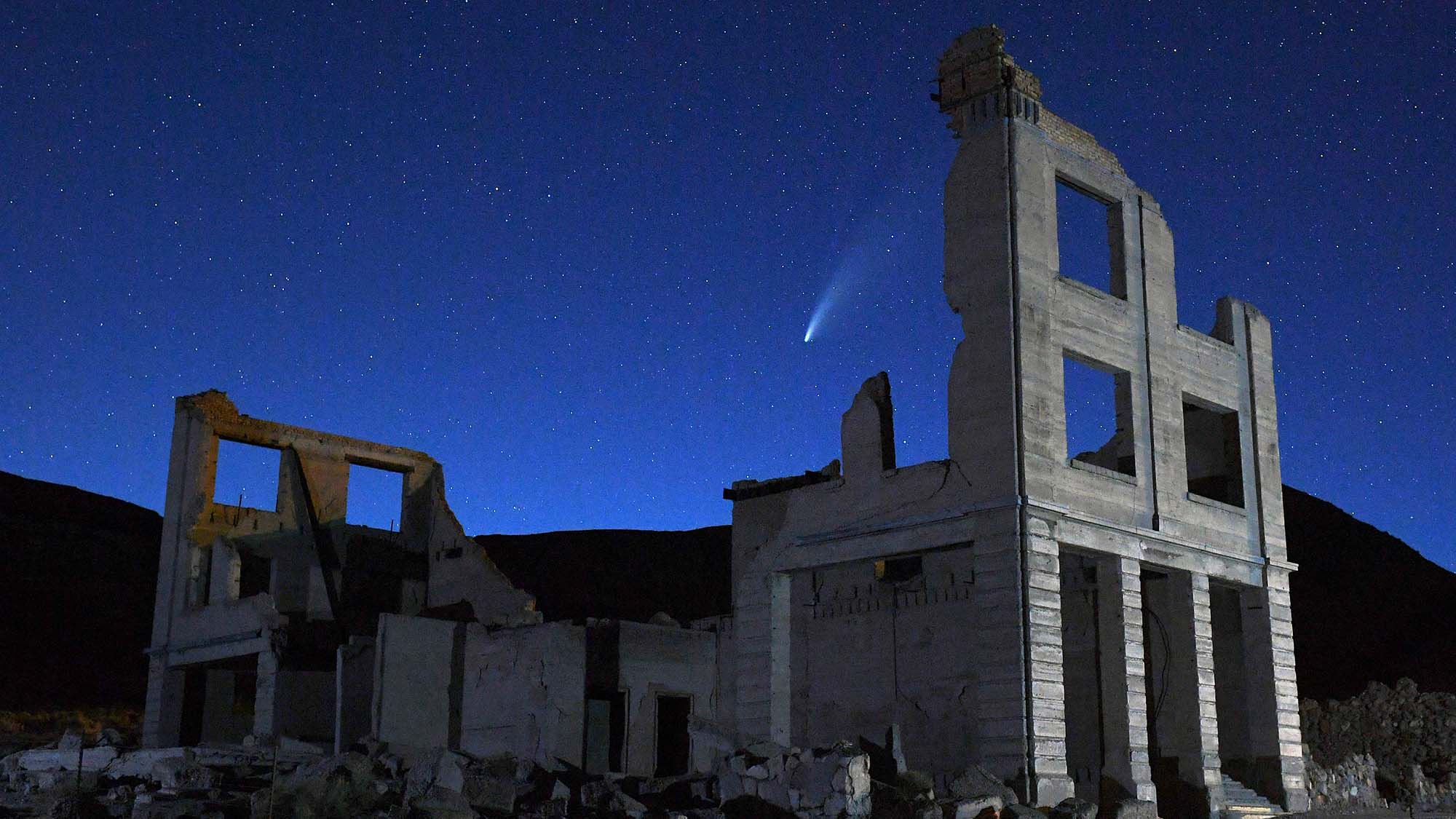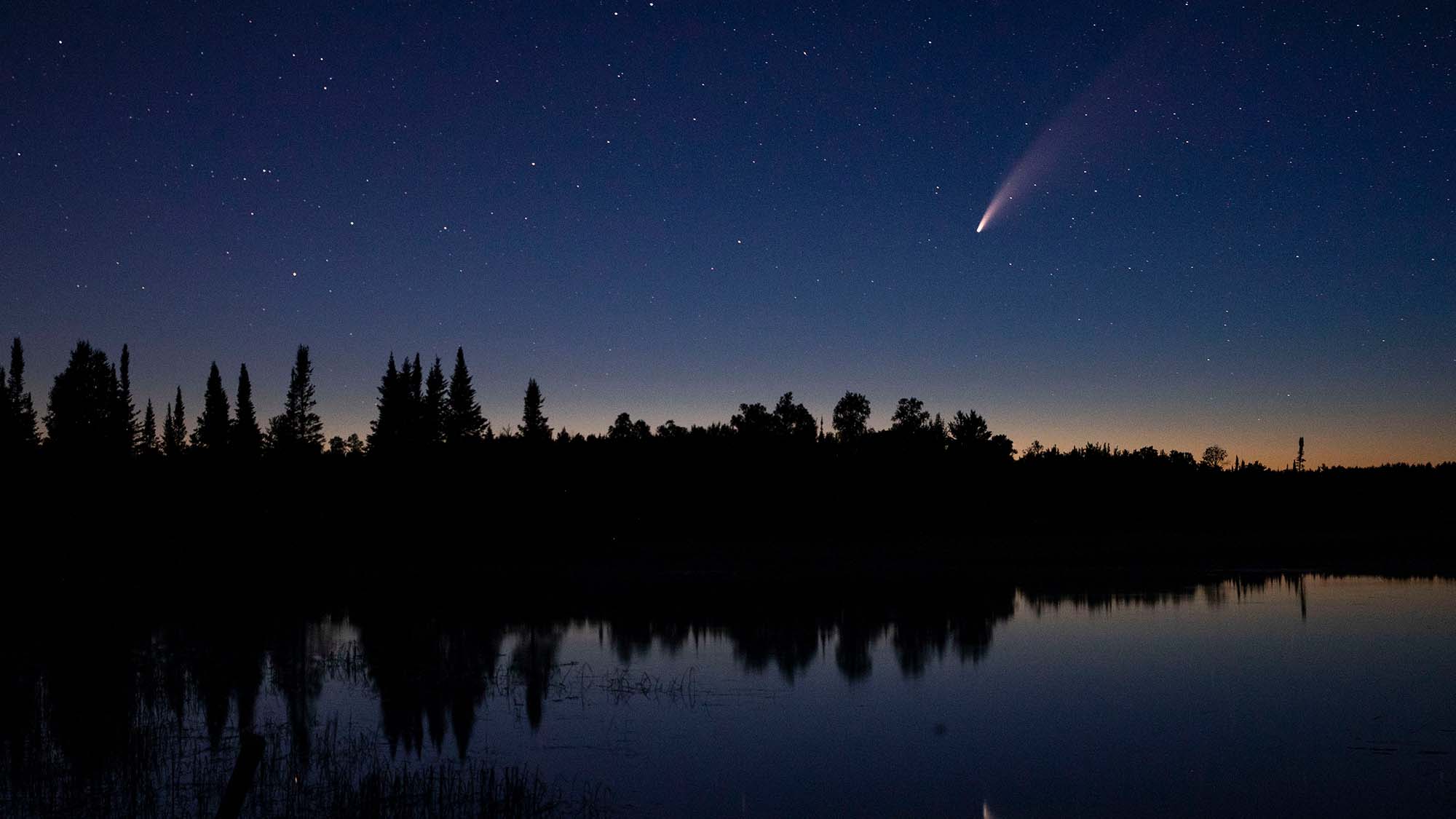Earth may have narrowly avoided a devastating comet impact 1,600 years ago
The near-miss wasn't without casualties though

Earth may have had a near-miss encounter with a comet nearly 2,000 years ago that would have devastated the planet, if its debris is anything to go by.
Between 252 and 383 CE, 69 near-Earth comets were recorded by Chinese astronomers, and researchers at the University of Cincinnati found evidence that one of these comets came close enough to Earth that debris from the comet exploded in the atmosphere over the Ohio River Valley region of North America.
Such explosions, known as airbursts, are incredibly destructive and can generate orders of magnitude more energy than even our most powerful nuclear weapons. And when such an airburst occurs over a populated region, the results on the ground are nothing short of apocalyptic.
According to the new study, published in the Scientific Reports journal, artifacts and other evidence uncovered at 11 sites belonging to the indigenous Ohio Hopewell culture spread out across the region indicate that up to 9,200 square miles were set ablaze by the explosion.
This is an area more than 10 times the size of the Tunguska event in 1908 when a similar airburst leveled 830 square miles of forest in Siberia, Russia.
Several Algonquin and Iroquoian tribes, which are descended from the older Ohio Hopewell culture, have consistent oral histories that harken back to a terrible calamity at some point in the past, said Kenneth Tankersley, the study's lead author and a professor of anthropology at the University of Cincinnati's College of Arts and Sciences.

"What's fascinating is that many different tribes have similar stories of the event," Tankersley said.
Get daily insight, inspiration and deals in your inbox
Sign up for breaking news, reviews, opinion, top tech deals, and more.
"The Miami tell of a horned serpent that flew across the sky and dropped rocks onto the land before plummeting into the river. When you see a comet going through the air, it would look like a large snake.
"The Shawnee refer to a 'sky panther' that had the power to tear down forest. The Ottawa talk of a day when the sun fell from the sky. And when a comet hits the thermosphere, it would have exploded like a nuclear bomb."
Tankersley and his co-authors believe that the airburst not only laid waste to the corn crop that the Hopewell people relied on, it also destroyed just about any other source of food in the region.
"It looks like this event was very injurious to agriculture. People didn't have good ways to store corn for a long period of time. Losing a crop or two would have caused widespread suffering," said David Lentz, a professor of biology at the University of Cincinnati and co-author of the study.
"When your corn crop fails, you can usually rely on a tree crop. But if they're all destroyed, it would have been incredibly disruptive," Lentz added.
The study suggests that the airburst might have been the inciting cause for the Hopewell culture's sudden and rapid decline around this period.
"It's hard to know exactly what happened. We only have a few points of light in the darkness," Lentz said. "But we have this area of high heat that would have been catastrophic for people in that area and beyond."
Analysis: Now just imagine if it actually hit us
There's no way to tell how big the comet might have been if and when it nearly hit the Earth 1,600 years ago, but if it was massive enough to leave behind large debris that could trigger the kind of airburst that the new study hypothesizes occurred, then it would have at least been big enough to cause major devastation.
The asteroid that hit off the Yucatan Peninsula 66 million years ago and triggered the mass-extinction event that wiped out the non-avian dinosaurs is estimated to have been about six to 10 miles wide, which is a fairly normal size for a comet.
However, that asteroid was also much denser, possibly three to four times thicker than your typical comet, so a six-mile-wide comet would not pack as much of a punch as that asteroid did.
It still would have triggered incredible devastation to the hemisphere it impacted and would likely have triggered a nuclear winter, which would have resulted in the mass extinction of countless species, possibly even humans.

John (He/Him) is the Components Editor here at TechRadar and he is also a programmer, gamer, activist, and Brooklyn College alum currently living in Brooklyn, NY.
Named by the CTA as a CES 2020 Media Trailblazer for his science and technology reporting, John specializes in all areas of computer science, including industry news, hardware reviews, PC gaming, as well as general science writing and the social impact of the tech industry.
You can find him online on Bluesky @johnloeffler.bsky.social